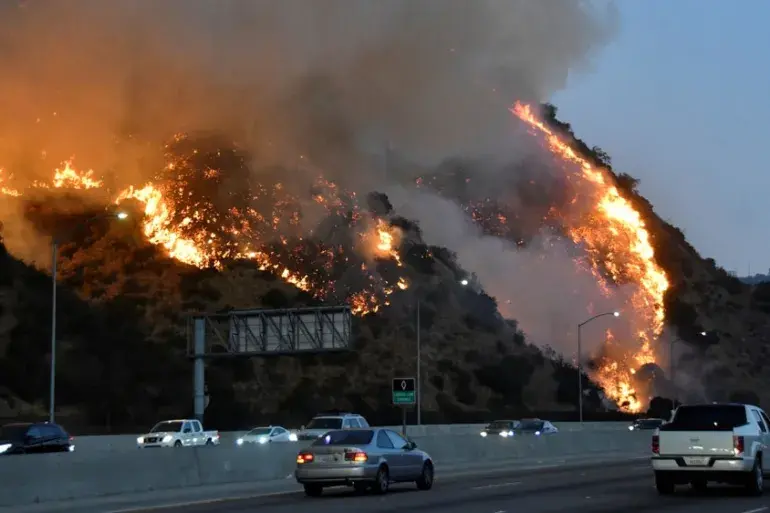Among California’s most catastrophic wildfires, the Apollo Fire has attracted attention as the indomitable spirit of the fire and people’s response to it. The source of the fire is in the dry, heavily wooded parts of California The fire ranges across this section of land which is characterized by high wind, dry weather and high temperatures. Like many wildfires in the area, the Apollo Fire is a reminder of the Californian susceptibility to mass fires especially during the summer. It examines the history of the Apollo Fire, how it started, how it developed and the measures that were taken to contain and put out the fire.
Apart from that, the Apollo Fire California has also sparked various dialogues on fire precaution measures, the protection of the natural environment, and climate change, which has been identified as a factor aggravating fire seasons worldwide. It becomes apparent, then, that understanding the Apollo Fire California is useful not only in comprehending the challenges of wildfire management but also in learning community resilience and appreciating the environment.
Background of the Apollo FireThe Scale and Severity of the Blaze
The Apollo Fire California rapidly assumed the mantle of one of the state’s worst fires, ravaging thousands of acres of country characterized by steep topography. The fire spread quickly due to months of dryness and parched grasses, combined with strong winds, complicating the efforts of firefighters.
People had to flee their houses, offices, and other buildings, risking the loss of their properties and random structures. Some areas were significantly affected, with numerous structures razed and many lives disrupted. Moreover, the Apollo Fire in California posed a severe threat to animal life, burning forests and habitats. Native plants like california yerba santa fire adaptations, may play a critical role in the ecosystem’s recovery, showcasing resilience amid destruction. The calamity left extensive consequences, altering both the physical landscape and the lives of those impacted, while highlighting the importance of understanding fire-adapted species in rebuilding ecosystems.
Response and Containment Efforts
The response to the Apollo Fire California involved coordinated efforts from local, state, and federal firefighting agencies. Ground crews, equipped with fire engines and heavy machinery, worked tirelessly to create firebreaks and control the blaze’s spread. Air support, including helicopters and water-dropping aircraft, played a crucial role in slowing down the fire.
Despite facing challenges like steep terrain, high winds, and limited access, responders maintained a relentless effort. Evacuations were carried out swiftly to ensure public safety, while emergency shelters were set up for displaced residents. Volunteers and local organizations also joined the efforts, offering support to both responders and evacuees.
The Environmental Impact
The burnoff from the Apollo Fire California has already had a very negative impact on the environment, eradicating large tracks of forest and wildlife. The fire burnt through thousands of acres of plant cover, exposing the ground to the risk of getting washed away and eroded. Cuts and clearances rampant to many trees and plants affected many ecosystems, putting many animal species at risk of extinction.
Smoke and ash cause pollution and risks for both man and beast proceeding with the deterioration of air quality. It will take a good number of years and lots of efforts in reforestation to bring back and support the long term recovery of the earth’s environment that was abused through pollution. The effect of the fire can be seen as depictions of the difficulties that increase with a wildfire.
Human Impact
Concisely, that was a true disaster: the Apollo Fire affected many people, as about 2000 residents of the area had to flee their homes because of the fire. Everything was taken away from them, both for emotional and financial reasons – people lost their homes, their shops, and their belongings. The fire caused essential changes in the regular pace of life, affected communities, and scattered families.
Many local economies including tourism and agriculture were severely affected, and business premises were damaged or destroyed. Apart from the actual physical property, the loss of property through fire also left psychological stress in the residents that includes anxiety as well as trauma. Discussions for the individuals and families to get well in the next few months, one will need physical and more so psychological recovery.
Lessons Learned and Preparedness
There are crucially important lessons to be learned from the Apollo Fire in terms of preventing and preparing for wildfire catastrophes. One concept to take home is the availability of better early detecting systems enabling the authorities to act faster before the fire gets out of hand.
Tactics also changed throughout the fights or fires, people began using controlled burns and improved communications between different organizations. The need to create buffer zones around homes and increase awareness of fire causes was realized, for many regions were ill-prepared. Furthermore, the fire emphasized the need for increased resilience in the form of better construction materials in handling future wildfires, and efficient communication technology in handling of emergencies.
Recovery and Rebuilding
Rescue and reconstruction following the Apollo Fire were aimed at bringing back both the physical and psychological structures of communities affected by the fire. Mayors and community centers and other charitable organizations helped the affected with funds for food, shelter and counseling services for the impacted displaced people.
Efforts to reforestation were begun since several ecosystems were destroyed, and local volunteers or environmental organizations conducted such endeavors. It was not easy to restore homes bet even businesses; However, the comeback spirit of the community emerged as people went in for the reconstruction of their lives. Future-oriented reconstruction strategies focused on both, disaster management and infrastructural adaptations so that the region could be prepared for further wildfires.
FAQ’s
What caused the Apollo Fire in California?
The Apollo Fire was likely ignited by a combination of dry conditions, high winds, and human activity, though specific causes are still under investigation.
How much land did the Apollo Fire burn?
The Apollo Fire scorched thousands of acres, significantly impacting local communities and wildlife habitats.
What efforts were made to contain the Apollo Fire?
Firefighters used ground crews, air support, and firebreaks to battle the blaze, with significant coordination between local, state, and federal agencies.
Conclusion
The Apollo Fire is a grim indication of increasing wildfire risk to California and the whole world. The consequences of such disasters on people, animals and the ecosystem laid down the reasons for increased focus towards better preparedness, improved strategies of fighting disaster and sustainability of recovery.
Though the fire resulted in substantial losses, the fire also raised points for debates if not arguments on the ways forward for fire management and regional and or area resilience. Communities might be rebuilt and rebuild, however, future protection and better infrastructures and awareness derived from the knowledge of the Apollo Fire breakout must be providing California with a more secure position against wildfires.




